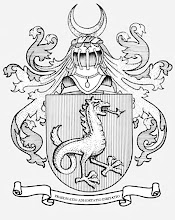I have just read yet another reference (in a review on Fuse #8) to "the current 'Don’t Let the Pigeon Drive the Bus' trend of breaking down the fourth wall and allowing the reader the chance to affect a picture book character’s actions." Surely I am not the only out-of-the-loop person wondering what are the first three walls. Could you please explain?
"The fourth wall" is an expression that comes from theater. The people on stage are pretending they are in a room: three of the room's walls are right there, on stage, with the furniture and other props. The fourth wall, the one closest to the audience, is not there. But because it is a play, the actors pretend there is a wall there (and not an audience), and interact solely with each other (and not the audience).
So "to break the fourth wall" is when an actor addresses the audience, breaking the suspension of disbelief that allows us to pretend what we're watching is its own self-contained world.
By extension, the expression has come to mean any situation in which the presence of an audience is acknowledged. Do you remember in Ferris Bueller's Day Off when Matthew Broderick looks directly at the camera, sharing a joke with the audience? That's breaking the fourth wall.
In children's books, this is not a new thing. You've read The Monster At the End of This Book, yes? Basically, breaking the fourth wall is just another way (though not the only one) to work in audience participation. Audience participation is very compelling to audiences everywhere, but especially so to children. Children don't see why they should be patient and let the artform reveal itself before they start being entertained. And, for that matter, neither do I.
Readers, what other children's books can you think of that ask for audience participation?











